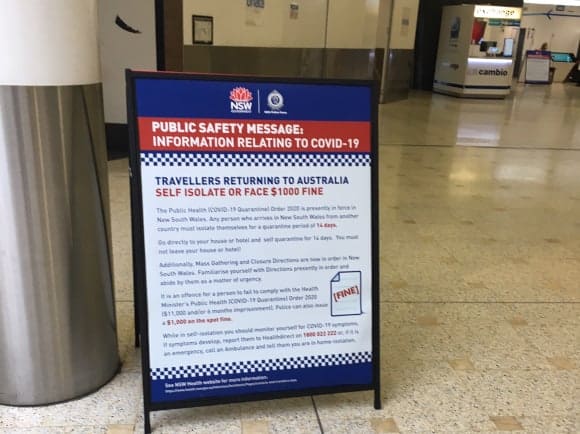Arriving in Australia During the COVID-19 Shutdown

The Australian government has now introduced enhanced screening of inbound arriving passengers as it fights to reduce the spread of coronavirus. With the new COVID-19 measures in place, here’s what it’s like arriving in Australia as an international passenger right now…
Getting back to Australia
Over the last few weeks, the coronavirus situation has been evolving rapidly. On Monday 16 March, the Australian government began requiring all passengers coming from overseas to self-isolate after arriving in Australia. Just days later, the government told Australians not to travel overseas at all and now Australia’s borders are closed to everyone except Australian citizens, permanent residents, their immediate family members and operating airline crews.
I’ve been overseas for the past several months – since well before the coronavirus outbreak even began in China. After observing how rapidly the situation was deteriorating over the past few weeks, and with flights being cancelled left, right and centre, I decided to return home to Australia this week while I still could.
There were very few commercial airlines still operating when I left Austria – which has already been on lockdown with land borders closed for almost two weeks. I had planned to return home on Emirates, but even Emirates (and Etihad, which is also based in the United Arab Emirates) has now cancelled all flights. I ended up flying back from Europe with All Nippon Airways (ANA) via Tokyo – which is still operating, for now.
Many airlines have already stopped flying to Australia, and others will follow in the coming week. At this stage, Qatar Airways and ANA have not announced Australian flight cuts. In fact, Qatar Airways is increasing service to Australia next week and launching a new service from Doha to Brisbane. Meanwhile, United Airlines will continue to fly between San Francisco and Sydney next month and Air New Zealand will retain very limited service across the Tasman.
But with demand for air travel currently at an all-time low – there were just 13 passengers in Economy class on my flight from Japan – it remains to be seen how long these flights will all last.
The new arrival procedures in Australia
I was informed of the self-isolation requirement when I checked in for my flights in Vienna, and there was also an announcement made at the boarding gate in Tokyo. After landing at Sydney Airport yesterday morning, a further announcement was made on board the plane. We were handed information sheets as we exited the flight, and there were signs and billboards with coronavirus information throughout the airport terminal.
After exiting the duty-free store – which much to my surprise, was still open – everyone was given a face mask, a self-isolation declaration card to fill out, and told to line up for a health check. Here, everybody had their temperature taken. With my temperature in the “safe” range, I was then told to speak to a biosecurity officer who briefed me on the self-isolation requirements and answered any questions.
After passing through the health screening checkpoint, an officer marked my inbound passenger card and I was free to clear Australian immigration & customs as per the normal process. However, all smart gates were closed so everybody had to line up to speak to a Border Force officer. Here, my signed self-isolation declaration form was collected. (This form simply asked you to acknowledge that you were aware of the self-isolation requirement and provide your address in Australia.)
Passengers that appeared to be unwell or displayed symptoms were taken aside for a more thorough health check, and I believe that some were not allowed to continue on domestic flights to their intended final destination in Australia.
There was some criticism in the media yesterday about long queues at Sydney Airport and social distancing measures not being enforced. I arrived on the same morning that this footage was taken and, unfortunately, I have to agree with the criticism. There were signs everywhere reminding people to keep their distance from other passengers, and the biosecurity officers were correctly enforcing this. But there was no social distance being kept while waiting in the long queue to clear the health check, nor when queuing up for immigration.
Overall, it took about an hour to clear all of the Australian health, immigration and customs checks, and to leave the airport. Most of the biosecurity, Border Force and airport staff that I spoke to while arriving in Sydney yesterday were friendly and courteous.
Having just returned from Europe, where there are currently many more COVID-19 cases than in Australia, I have been concerned to see how some Australians are not yet taking the threat of this virus seriously. This Sydney Morning Herald article sums up my thoughts on this well. Nonetheless, while Australia’s current international arrivals procedure is not flawless, it was promising to see that this pandemic is now being taken more seriously than a couple of weeks ago.
Australian Frequent Flyer has set up a new forum for news & discussion about COVID-19: Coronavirus (COVID-19) Discussion


